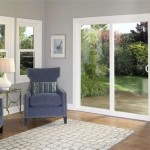Is White Patio Furniture A Bad Idea? Weighing the Pros and Cons
White patio furniture offers a clean, crisp aesthetic that can significantly enhance the look of any outdoor space. It evokes feelings of sophistication, serenity, and spaciousness, making it a popular choice for homeowners. However, before investing in a complete white patio set, it's crucial to consider the potential drawbacks associated with this color choice in an outdoor environment. This article will delve into the advantages and disadvantages of white patio furniture, providing a balanced perspective to help you make an informed decision.
The Allure of White Patio Furniture: Aesthetic Advantages
One of the primary reasons people are drawn to white patio furniture is its visual appeal. White effortlessly brightens up any setting, reflecting light and creating an ambiance of openness. This is especially beneficial for smaller patios or outdoor areas that may lack natural sunlight. White furniture can make these spaces feel larger and more inviting. Furthermore, white serves as a neutral backdrop, allowing other elements of the patio design, such as vibrant cushions, colorful plants, and patterned rugs, to take center stage. Its versatility allows it to seamlessly integrate into various design styles, from modern minimalist to classic coastal.
White furniture also presents a sense of timeless elegance. It’s a color that has remained consistently popular throughout design history, suggesting a sophisticated and refined taste. Unlike trendy colors that may fall out of favor quickly, white has enduring appeal. This means that investing in white patio furniture can be a long-term decision that won’t necessitate replacement due to changing trends.
Beyond its aesthetic qualities, white furniture can also contribute to a cooler outdoor environment. Darker colors absorb more heat from the sun, making furniture uncomfortable to sit on during hot days. White, on the other hand, reflects sunlight, helping to keep the furniture cooler and more pleasant to use, especially in regions with high temperatures.
The pristine appearance of white can also create a feeling of cleanliness and order. A well-maintained white patio set can transform an outdoor space into a relaxing and inviting oasis, promoting a sense of tranquility and well-being.
The Challenges of Maintaining White Patio Furniture: Practical Disadvantages
Despite its aesthetic advantages, white patio furniture presents significant challenges in terms of maintenance. The most prominent concern is its susceptibility to staining and dirt. White surfaces readily show any blemishes, including spills, dirt, pollen, mold, and bird droppings. This means that white patio furniture requires frequent cleaning to maintain its pristine appearance.
Specific types of stains can be particularly difficult to remove from white surfaces. For instance, red wine, coffee, or even the tannins from leaves can leave stubborn marks that require specialized cleaning products and techniques. Over time, exposure to the elements can also cause white furniture to yellow or fade, particularly if it's made from certain types of plastic or resin. This discoloration can detract from its original beauty and make it appear aged or neglected.
The frequency of cleaning required for white patio furniture can be a significant time commitment. Depending on the location and environmental conditions, it may need to be cleaned weekly or even daily to prevent the buildup of dirt and stains. This can be a deterrent for busy individuals or those who prefer low-maintenance outdoor furniture options.
Furthermore, the cleaning process itself can be more demanding than with darker colors. Harsh chemicals may be necessary to remove stubborn stains, but these can potentially damage the furniture's surface. Gentler cleaning solutions may be less effective, requiring more time and effort to achieve the desired results. The type of material the furniture is made from also influences the cleaning methods and products that can be used, adding another layer of complexity.
Material Considerations: Impact on Maintenance and Durability
The material used to construct white patio furniture significantly impacts its maintenance requirements and overall durability. Different materials react differently to environmental factors and require different cleaning approaches.
White plastic or resin furniture is a common and affordable option. It's generally resistant to water damage and fading, but it's prone to staining and can become brittle over time, especially with prolonged exposure to sunlight. Cleaning plastic furniture often involves using mild soap and water, but stubborn stains may require stronger cleaning agents. However, abrasive cleaners should be avoided as they can scratch the surface and make it more susceptible to dirt accumulation.
White metal furniture, such as aluminum or wrought iron, offers greater durability and weather resistance. However, it can be susceptible to rust if the protective coating is damaged or scratched. White powder coating is often used to protect metal furniture, but this coating can chip or fade over time. Cleaning metal furniture typically involves using a damp cloth and mild soap. Rust stains may require specialized rust removers, but caution should be exercised to avoid damaging the surrounding paint.
White wood furniture, such as teak or acacia, provides a natural and elegant look. However, wood requires regular maintenance to prevent warping, cracking, and fading. White paint or stain can protect the wood, but it needs to be reapplied periodically to maintain its appearance and prevent water damage. Cleaning wood furniture involves using a soft brush and mild soap and water. Avoid using harsh chemicals or abrasive cleaners, as these can damage the wood and strip the paint or stain.
White wicker furniture, whether natural or synthetic, offers a classic and comfortable seating option. Natural wicker is susceptible to moisture damage and insect infestations and requires regular sealing and protection. Synthetic wicker is more durable and weather-resistant but can still fade or become brittle over time. Cleaning wicker furniture involves using a soft brush or vacuum to remove dirt and debris. Mild soap and water can be used to clean stains, but avoid soaking the wicker as this can damage it.
Choosing the right material for white patio furniture depends on individual preferences, budget, and the level of maintenance one is willing to undertake. Carefully considering the pros and cons of each material is essential for making a decision that aligns with your lifestyle and ensures the longevity of your outdoor furniture.
In addition to the material itself, the quality of construction also plays a crucial role in the durability and longevity of white patio furniture. Investing in well-made furniture from reputable brands can help ensure that it withstands the rigors of outdoor use and maintains its appearance for years to come.
Ultimately, the decision of whether or not white patio furniture is a good idea depends on a careful assessment of one's lifestyle, environmental conditions, and willingness to commit to regular maintenance. While it offers undeniable aesthetic advantages, the practical challenges associated with keeping it clean and pristine should not be overlooked. Weighing the pros and cons and considering the specific material and construction quality will help make an informed decision that results in a beautiful and enjoyable outdoor space.

Is White Patio Furniture A Bad Idea Ions

Best Patio Furniture 2024 Forbes Vetted

Decorating Outdoor Spaces Start With These 5 Tips Ruggable Blog

How To Paint Stain Outdoor Wood Furniture Beamin Moore

How To Properly Wicker Furniture In The Winter

How To Winterize Patio Furniture The Cover Blog

22 Best Patio Furniture Sets In 2024 Worth Every Cent Cnn Underscored
.png?strip=all)
66 Prime Day Patio Furniture Deals 2024 To Now Architectural Digest

Can You Use Wicker Furniture Outside
.png?strip=all)
29 Best Outdoor Furniture S To Turn Your Space Into An Oasis Architectural Digest
Related Posts








